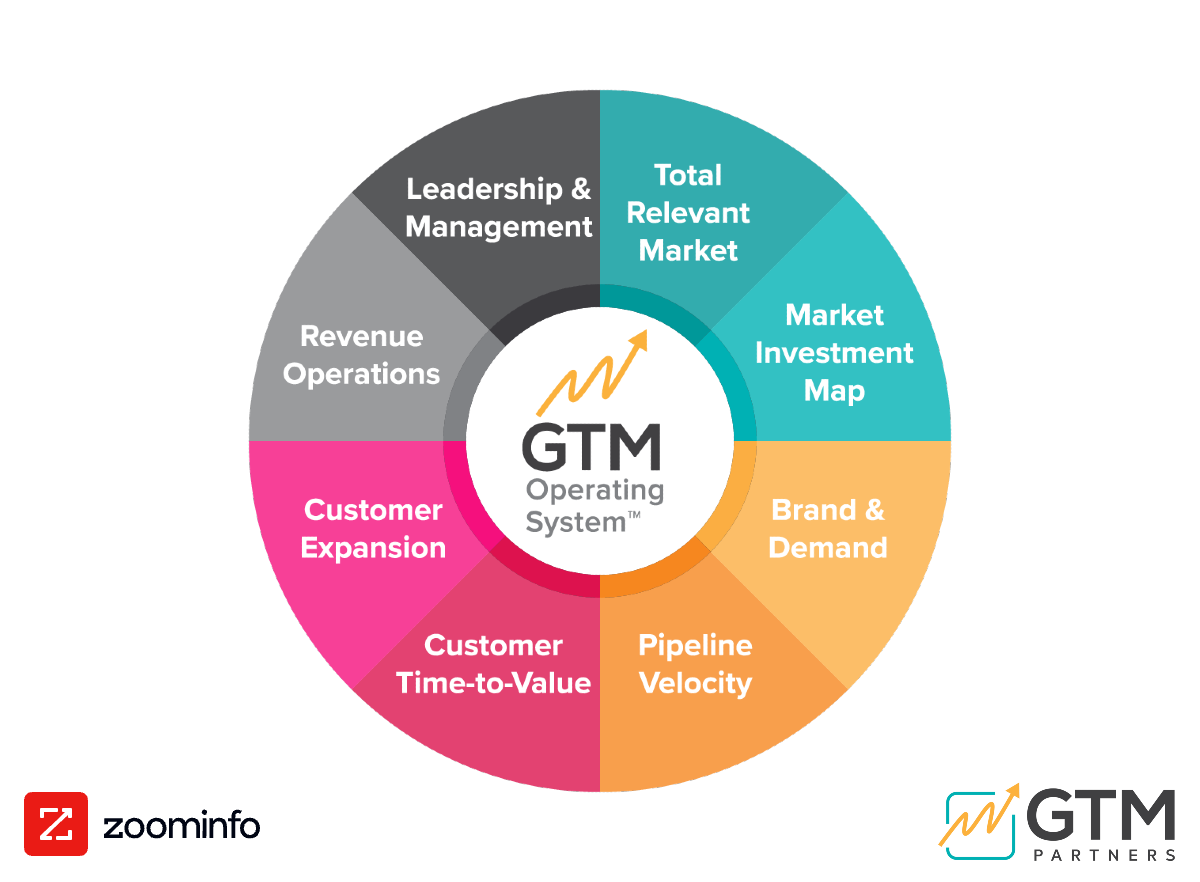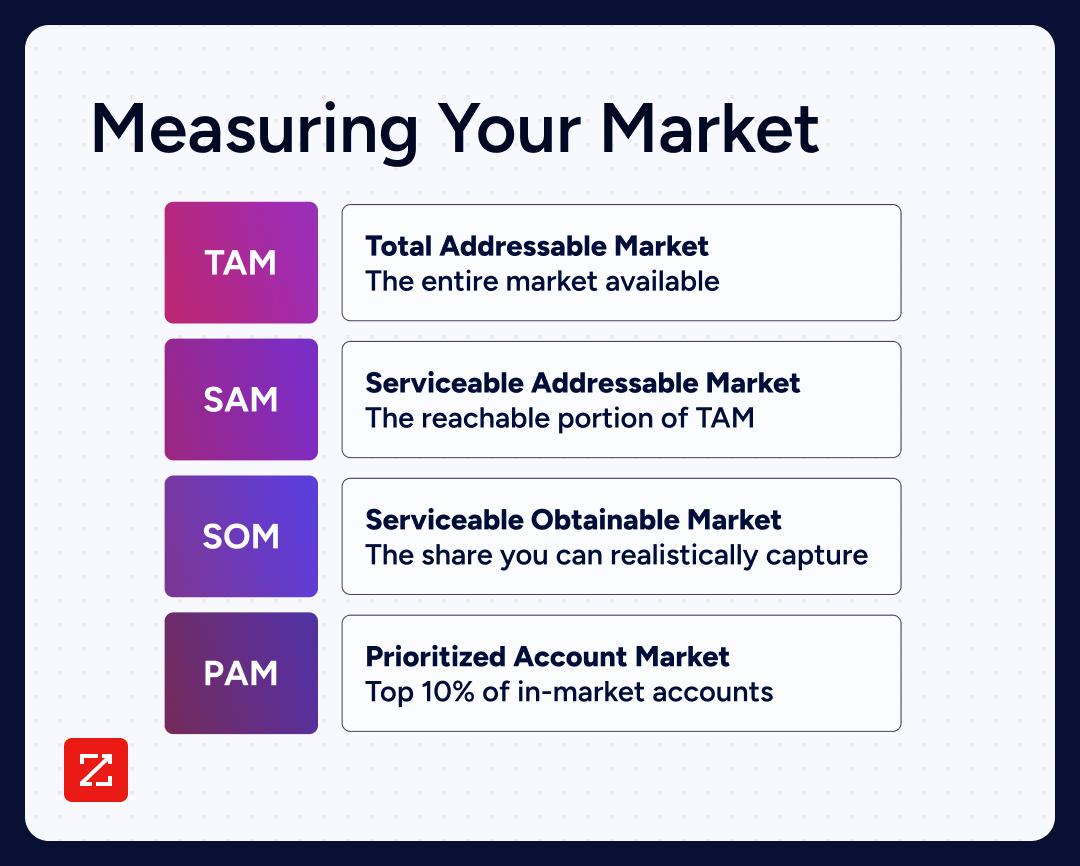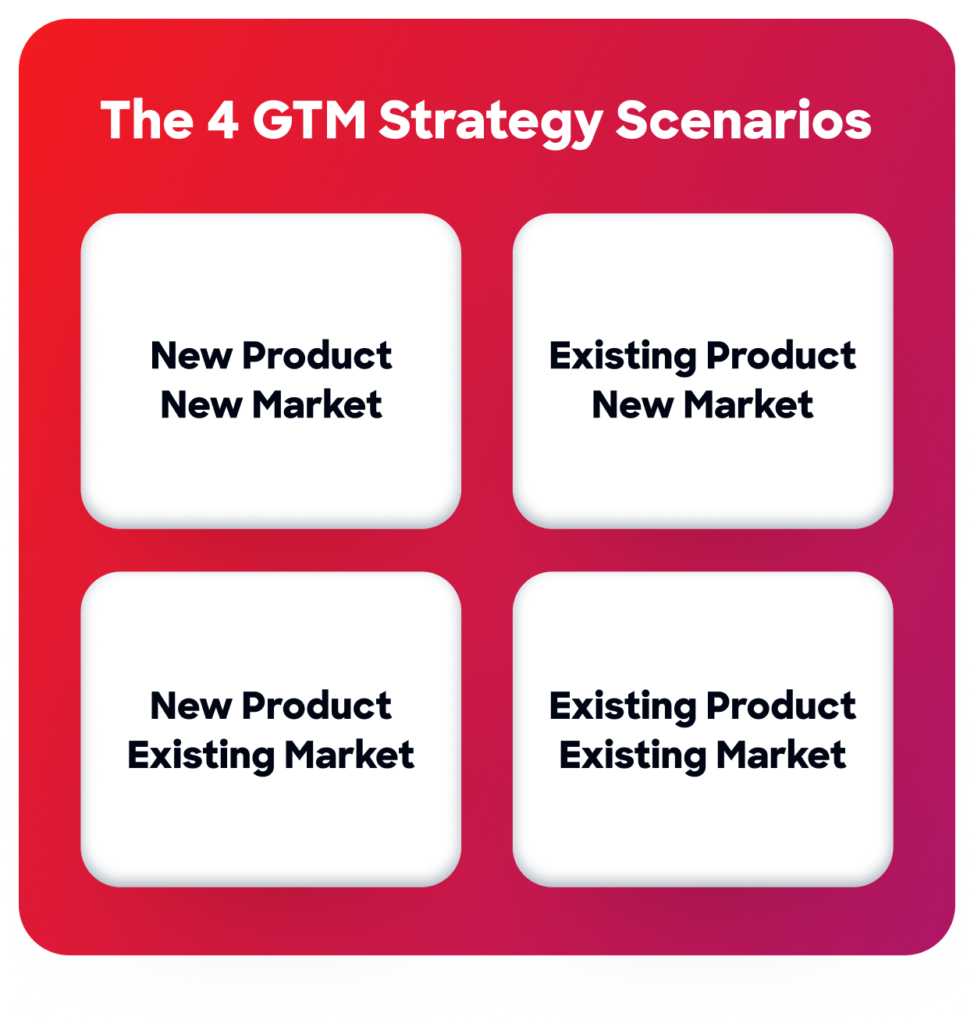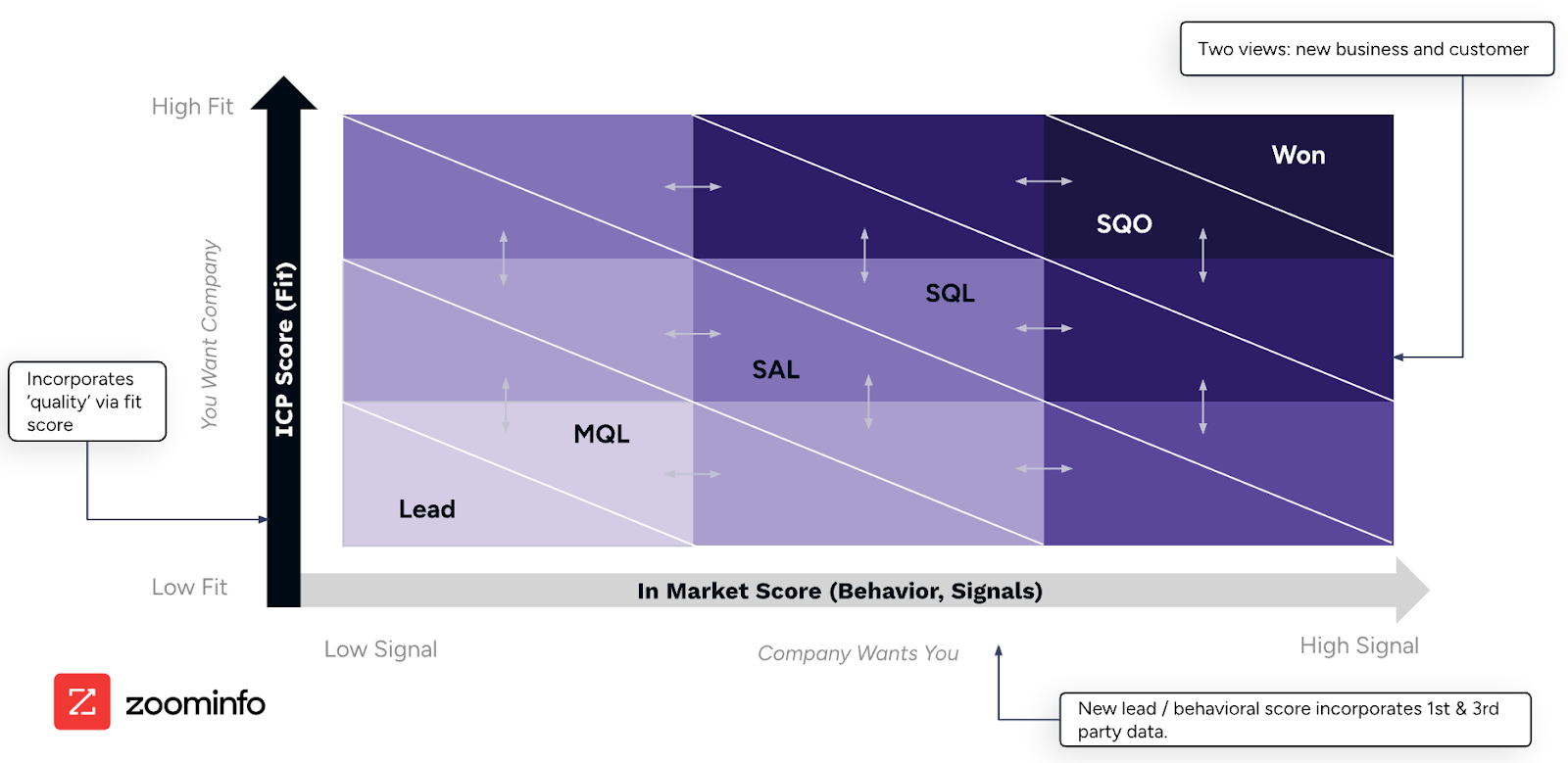Whether you’re a startup launching a new product or an enterprise expanding into new territories, a unified go-to-market strategy is essential to success and strong, sustainable growth.
But too many businesses mistakenly think of their go-to-market strategy as a static process — do it once, and let it ride.
The best go-to-market strategies are repeatable, but they’re also tailored to the needs of individual prospects at any point in the purchasing journey.
Here’s how the world’s leading brands meet that challenge and devise go-to-market strategies that capture emerging opportunities as they happen, to outperform their competitors and build sustainable revenue engines.
What is a Go-to-Market Strategy?
A go-to-market strategy, or GTM strategy, is a comprehensive plan that details how a company will bring a product or service to market. A comprehensive GTM strategy will cover everything a company needs to go to market, including key factors such as market opportunity, customer profiles, and sales methodologies.
When designing a GTM strategy, you’re setting up a clear guide with steps, or tactics, to follow. GTM tactics — specific sales outreach motions, marketing campaign budgets, discounting and incentives — are related, but typically more granular than a high-level GTM strategy.
Leading go-to-market advisory and consulting firm GTM Partners uses a proprietary framework called the GTM Operating System to define the eight core pillars every successful GTM strategy should have to enable high-performance growth.

Elements of a GTM Strategy
At a high level, every GTM strategy should describe:
Market Sizing: There are several ways to measure your market opportunity. It’s usually helpful to think of a broad measure first, and then narrow into more immediate or realistic subsets in order to focus your GTM efforts. A tiered approach to market sizing can include:
Total Addressable Market (TAM)
— the entirety of the total market available to your business
Serviceable Addressable Market (SAM)
— the portion of your TAM it is feasible for your business to reach and serve
Serviceable Obtainable Market (SOM)
— the share of your SAM you can realistically capture
Prioritized Account Market (PAM)
— the best-fit accounts that have demonstrated they are in-market for your product or service, representing the top 10% of accounts within your TAM

Target Customer Definition:
Identify and segment
ideal customer profiles (ICPs)
using demographic, psychographic, and behavioral data.
Value Proposition:
Clearly articulate the unique benefits and differentiators of your product or service that address specific pain points that align with your ICPs
Product Positioning:
Establish how your product fits within the competitive landscape, ensuring that its value to the target market & target audience is clear
Sales Strategy:
Outline the sales process, channels (direct, indirect, self-serve), and organizational structure needed to drive revenue
Marketing Strategy:
Detail demand generation, content, digital, and brand marketing tactics that will attract, convert, and retain prospects, while aligning with your comprehensive go-to-market plan.
Customer Journey and Experience:
Map how buyers will move between each phase of the buying experience, ensuring movement both forward
and
backward can be mapped and relevant messaging aligned
Distribution Channels:
Identify how the product will reach customers, such as physical and online purchase as well as resellers and third-party marketplaces, and outline measures to mitigate potential channel conflicts
Core Metrics and KPIs:
Define success criteria with measurable goals such as pipeline growth, conversion rates, customer acquisition cost (CAC), and customer lifetime value (LTV). Goals should align with your broader marketing strategy, and ensure that the entire management team is on the same page.
Launch and Enablement Plans:
Coordinate internal teams and equip sales and support with training, tools, and content for successful product launches, cross- and upsell opportunities, and ongoing customer support
A well-built GTM strategy uses the best B2B data and buying signals, and orchestrates omni-channel engagement to reach the right people at the right time with the right message.
To be successful, a go-to-market strategy must be comprehensive enough to capture the breadth of a company’s sales, marketing, and customer success efforts, meeting highly empowered, informed buyers on their terms and focusing on their needs.
GTM strategy includes defining the target audience and identifying the true scope of your total addressable market (TAM), and developing messaging frameworks, marketing channels, offers, and the specific motions your teams will execute to convert prospects to leads and leads to customers.
A successful GTM strategy needs to be clear and comprehensive enough for others to easily understand its value. It also puts focus on the customer and how your solution applies to them, based on continuous feedback and real-time signals.
The best GTM strategies maximize customer lifetime value (CLV). Because winning new customers is expensive, implementing a plan to maintain and support them from the start can save money in the long run.
When Do You Need a Go-to-Market Strategy?
A GTM strategy is needed anytime you bring a product or service to market. It guides how you approach each market scenario and ensures your product launch fulfills its potential. Here are four specific scenarios where a GTM strategy is typically needed:

A solid GTM strategy is just as vital if you’re launching a brand-new product, adding new features, looking to improve your penetration in existing markets, or trying to reach customers in new territories or verticals.
New Markets: Expanding into new markets is the foundational case for building a targeted, high-quality GTM strategy. Too many companies stumble at this stage, however, by basing their GTM strategies on flawed or outdated assumptions. The most effective businesses recognize that market expansion demands an evolving, data-driven approach that questions old assumptions and models.
Existing Markets: Don’t assume an existing strategy or way of working in an existing market is still relevant. Even if you plan to continue selling an existing product in an existing market, take periodic opportunities to reevaluate your strategy and figure out what’s working and what’s not. The pace of modern business simply moves too quickly to make strategic decisions based on historical precedent — what has worked before is no guarantee of future success. Effective management of your go-to-market efforts requires constant reevaluation and adaptation.
Which Pain Points Can a Go-to-Market Strategy Solve?
Understanding customer pain points can help with messaging development in your GTM strategy. Here are some common pain points that a go-to-market strategy can help address effectively.
Budget: Where are your customers wasting money? How can their budget be optimized with your solution?
People: How can your product make the end user’s day-to-day life easier? Are there opportunities to automate necessary, yet time-consuming, administrative tasks?
Process: How can your product create a structured process within the customer’s business?
Productivity: Are there opportunities for more efficient ways of working at your customer’s company? How can your product help employees be more productive?
Support: How can you offer greater support during the buying cycle and beyond? Customers that go through the buyer’s journey with little or no support lose confidence in business relationships.
Key Stakeholder Alignment for Successful GTM Strategy
A successful GTM strategy requires strong alignment with internal stakeholders and focus among the teams being asked to lead the charge.
1. Audience research and targeting
Whether you’re launching a new product in a new market or relaunching in an existing market, research is key to understanding the target audience and its needs. Your target market may not have the same motivations it did a year ago, six months ago, or even a few weeks ago.
Buyer Personas
Creating buyer personas enables your team to reach out to groups of customers at scale based on shared characteristics, which can help fine-tune messaging and speak to the specific pain points of those users. For example, at ZoomInfo, one of our buyer personas is sales directors in the manufacturing industry, whereas another buyer persona is marketing directors in the technology industry.
Data-driven buyer personas are essential in defining prospects’ buying committee infrastructure — the individuals who have the influence and authority to act decisively and move deals forward — as well as the relationships between those individuals.
Buyer personas should go beyond the basics to include a broad range of contact attributes, from seniority and function to title keywords, and should be codified so your entire organization leverages the same definitions across your CRM and marketing automation platforms.
ICP Definition
Once you have a sense of your buyer personas, it’s important to define your ideal customer profile (ICP) and prioritize the accounts that are most likely to purchase based on quantitative criteria. For example, your ICP might be companies with more than 1,000 employees that generate at least $25 million in annual revenue.
An ICP is especially important if your TAM includes a range of businesses of varying sizes, industries, and titles, because you’ll end up targeting buyers that aren’t fit to purchase your solution.
2. Product positioning and messaging
When it comes to developing your market position and messaging, you need to determine the value this new product or service brings to customers. Be really clear about why they should care.
One way to get that clarity is to focus on your customer’s pain points. Understanding the needs of your customers can help uncover opportunities for your team to help and guide your messaging strategy, increasing the likelihood that you’re bringing relevant solutions to your customers.
Another key component of positioning is understanding the competitive landscape — not just historically, but today.
Who are your top competitors? How does your product or service differ from theirs? More importantly, how are your prospects engaging with your competitors?
Real-time sales signals such as competitive research can reveal timely, emerging opportunities that the best GTM teams are poised to seize before their competitors. The ability to identify and capture these opportunities is often the difference between success and failure.
3. Cross-functional alignment
Prospects engage with a number of different teams throughout the buyer’s journey. When it comes to a GTM strategy, cross-functional alignment can support:
Clear and consistent messaging so customers hear the same information no matter who they speak with
A defined lead-management system so top priority leads are routed appropriately across both teams
An improved customer experience through greater personalization and seamless campaign execution
Revenue growth and ROI if the right messages are delivered to the right prospects at the right time
ZoomInfo recently surveyed 450 GTM leaders, and found that sales and marketing alignment remains among the largest obstacles facing GTM leaders. Almost half (48%) of sales leaders felt lack of alignment was among their most significant challenges, compared to 30% of marketing leaders.
Much of this tension is driven by conflicting priorities and misalignment in measuring outcomes. And despite decades of innovation in GTM software, the traditional sales and marketing funnel is simply too inflexible to capture prospects’ movement through today’s nonlinear purchasing journey, resulting in missed opportunities, misattribution, and resentment between teams.
The most forward-thinking businesses are no longer treating sales and marketing as separate, siloed teams, but part of a singular GTM force working in concert.
“When sales and marketing are working from a shared set of buying signals, and use the same AI tools to contextualize and activate those signals, they create a level of transparency that brings the entire GTM team together,” says Carl Koussan-Price, ZoomInfo’s senior vice president of marketing. “Alignment is not enough anymore — true integration is the goal.”
4. Define your GTM pricing model
One of the most challenging aspects of creating a GTM strategy is the pricing model. When it comes to figuring out how to price your products or services, there are generally four options to consider:
User-based pricing: Customers are charged based on the number of employees using your product.
Usage-based pricing: Customers are charged based on how much they use your product This is often determined by assigning internal “credits” of some kind for a given action in your service. Companies may offer pricing based on a combination of per-user “seat” access and credit consumption.
Tiered pricing: Customers are charged depending on the product package they choose. Packages include different features and functionality at each level. For entry-level products, you may consider a “freemium” model that allows access to basic features for free, as a way to encourage upcharges for more sophisticated use.
Flat-rate pricing: Customers are all charged the same price for full access to your product. Sales teams will typically offer discounts and special incentives to bring down the effective price paid by each customer.
Remember, some products will have a combination of these pricing models, or use some portion of all of them based on account tier or other factors. Determine a pricing model that not only takes into account the development costs but also supports your value-prop messaging and market
How to Create a Data-Driven Go-to-Market Strategy
A rock-solid GTM data strategy is essential to scale your business. When you prioritize quality data, it’s easier for your teams to find the right group of decision-makers at the right time at key accounts.
Most revenue leaders recognize the importance of accurate, trustworthy data in their GTM strategies. Despite this, however, few are acting on that knowledge — and even fewer have confidence that what they are doing is working.
ZoomInfo’s recent survey for example, revealed that only half of GTM leaders are satisfied with the quality of their customer and prospect data. Even revenue leaders who are investing in real-time data have persistent doubts about its reliability — one in four doubt whether their real-time GTM data is actually updated in real time.
So what can revenue leaders do to ensure the data their teams are working with is reliable, accurate, and actionable?
1. Invest in Go-to-Market Intelligence
A successful GTM strategy requires insights into who your prospects are, far beyond what typical CRM systems or static lead lists can offer. The solution is Go-to-Market (GTM) Intelligence.
Beyond traditional sources of prospecting or marketing data, GTM Intelligence is the combination of:
High-quality company, contact, firmographic, and technographic data
Buying signals, such as
, public statements, and survey responses
AI-fueled research, analysis, insights, and recommendations
GTM Intelligence allows sales, marketing, and operations teams to turn their first-party CRM data — highly valuable, but often incomplete information — into a 360-degree view of target markets and ideal customers.
GTM Intelligence is the basis for AI workflows and agents that are far more powerful than basic AI solutions, such as mass-market chatbots or simple CRM enhancements. This combination of foundational data from your CRM and dynamic, real-time buying signals empowers your business to grow faster by giving every seller a more informed, complete customer view.
Investing in a GTM Intelligence platform means your entire strategy is informed by the best available market data, and your entire GTM team can better understand not just who’s in-market, but when they’re ready to buy.
With GTM Intelligence, your team can:
Instantly identify key decision-makers and influential members of the buying group, and map the relationships between these individuals and your company, including previous engagements
Prioritize best-fit accounts based on buying signals, such as funding announcements, champion movements, or active category and competitor research
Build custom account plans supported by advanced scoring and fresh insights
Orchestrate sophisticated, coordinated GTM motions that target your key audiences in the best possible context with the most timely, relevant messaging
2. Consolidate your tech stack
Once you have a solid data foundation, it’s time to bring all of the aspects of your GTM strategy together under a unified tech stack. Consolidating your GTM tech stack is about much more than reducing costs and streamlining workflows — it’s about building the foundation for targeted execution.
The most creative, ambitious revenue strategies succeed when they’re supported by coordinated sales execution across the entire GTM team, from marketing to SDRs to AEs to RevOps.
Execution depends on your entire GTM team operating from the most valuable, relevant information about an account. This gives everyone access to the same insights, ensuring that everyone is working from the same page in real time.
Fragmented tech stacks make the kind of execution necessary to succeed in today’s markets a considerable challenge. At best, working across potentially dozens of separate tools slows the pace of execution to a crawl, resulting in chronic delays and missed opportunities. At worst, it renders bold, ambitious ideas impossible.
3. Measure the Effectiveness of Your GTM Strategy
Whether it’s sales, marketing, product, or customer success, everyone on the GTM team needs to agree what you’re tracking and which KPIs matter most.
Here are some KPIs to consider when first creating your GTM strategy:
Customer Acquisition Costs (CAC): The CAC is the total spend across channels to bring on a new customer. This is a metric that, over time, can help show whether the cost to bring on a new customer is increasing or decreasing.
Annual Recurring Revenue (ARR): The ARR is the total amount of revenue that you are consistently bringing in from customer contracts each year. This metric can help track the overall financial performance of your business.
Monthly Recurring Revenue (MRR): The MRR is the total amount of revenue that you are consistently bringing in from customer contracts each month. This is more common to track if you have a payment model where customers make payments every month instead of in a lump sum.
Churn Rate: The churn rate shows how many customers you lose during a given period. This is always an important metric to track, but especially when you bring a new product to market.
Return on Ad Spend (ROAS): When you first launch a GTM strategy, you might decide to increase your advertising budget. Calculating the ROAS of those efforts will show whether those efforts are paying off, guiding future investment strategy
Organic Search Traffic: Tracking organic search traffic will show how many customers are coming to your website or specific web pages without being prompted by advertising, social media, or emails. If your GTM strategy includes specific branded terms, it’s helpful to measure any increased awareness or interest in those terms with organic search.
Net Promoter Score (NPS): The NPS is a measure of customer satisfaction and loyalty. Tracking how this changes month over month, or even week over week, can be valuable when you go to market with a new product.
It’s also important to identify what your most valuable existing accounts have in common. If your average sales cycle is six months, identify what your most valuable accounts were doing six months before they became customers. Which roles were they hiring for? Which technologies were they using or researching? What types of content were they consuming?
GTM Strategy Framework: The Unified Funnel
Once you’ve identified the right metrics, it’s crucial to evaluate performance constantly. Conventional approaches to quantifying success, such as quarterly reporting, are simply no longer relevant in today’s rapidly changing markets, and relying on them will hinder the effectiveness of your campaigns.
A mature attribution model for today’s nonlinear purchasing journey considers behavioral signals as well as alignment with ICPs. It accounts for multiple types of engagement, and measures sales and marketing touchpoints. It factors in the quality of engagements, not just quantity, and spans the customer lifecycle beyond the initial purchase.
We call this the unified funnel.

The unified funnel approach enables customers to make informed decisions about activation and attribution, and track success based on how prospective customers actually move through the purchasing journey — both forward and backward.
As a result, activation is no longer an issue of sales and marketing alignment or prioritization, instead becoming a deeply integrated, coordinated GTM effort.
Remember: always test and learn. Your GTM strategy will naturally evolve along with your customers and the macro environment. That means indicators of success will as well. Carve out time at least once per month to check in with your teams on priorities and match those against customer behaviors.
Modernizing Go-to-Market for All
GTM is the beating heart of every company. It lays the foundation for market position, messaging, sales processes, and customer satisfaction.
Modernizing GTM means optimizing and improving your strategy with software, intelligence, and insights. Not only is an efficient go-to-market motion a tactical and operational advantage, but it’s also an overarching strategic advantage.
ZoomInfo has spent nearly 20 years helping companies go to market with the tools they need to drive the results they want. Our platform aligns sales and marketing teams to find, acquire, and grow customers.
Ready to learn more about modernizing your GTM strategy? Find out why ZoomInfo is the GTM Intelligence Platform trusted by more than 35,000 businesses worldwide — and get started on your next great go-to-market strategy.


